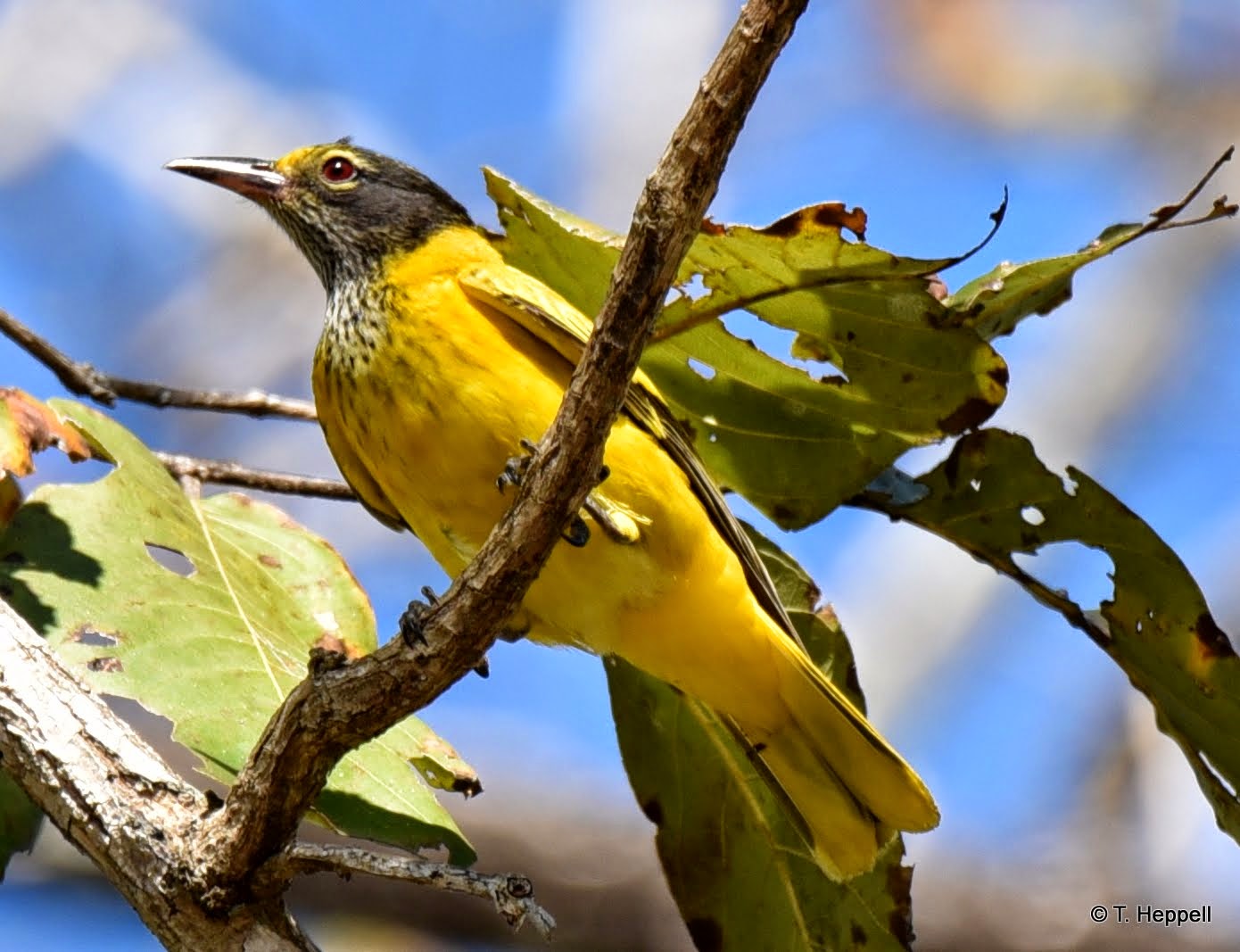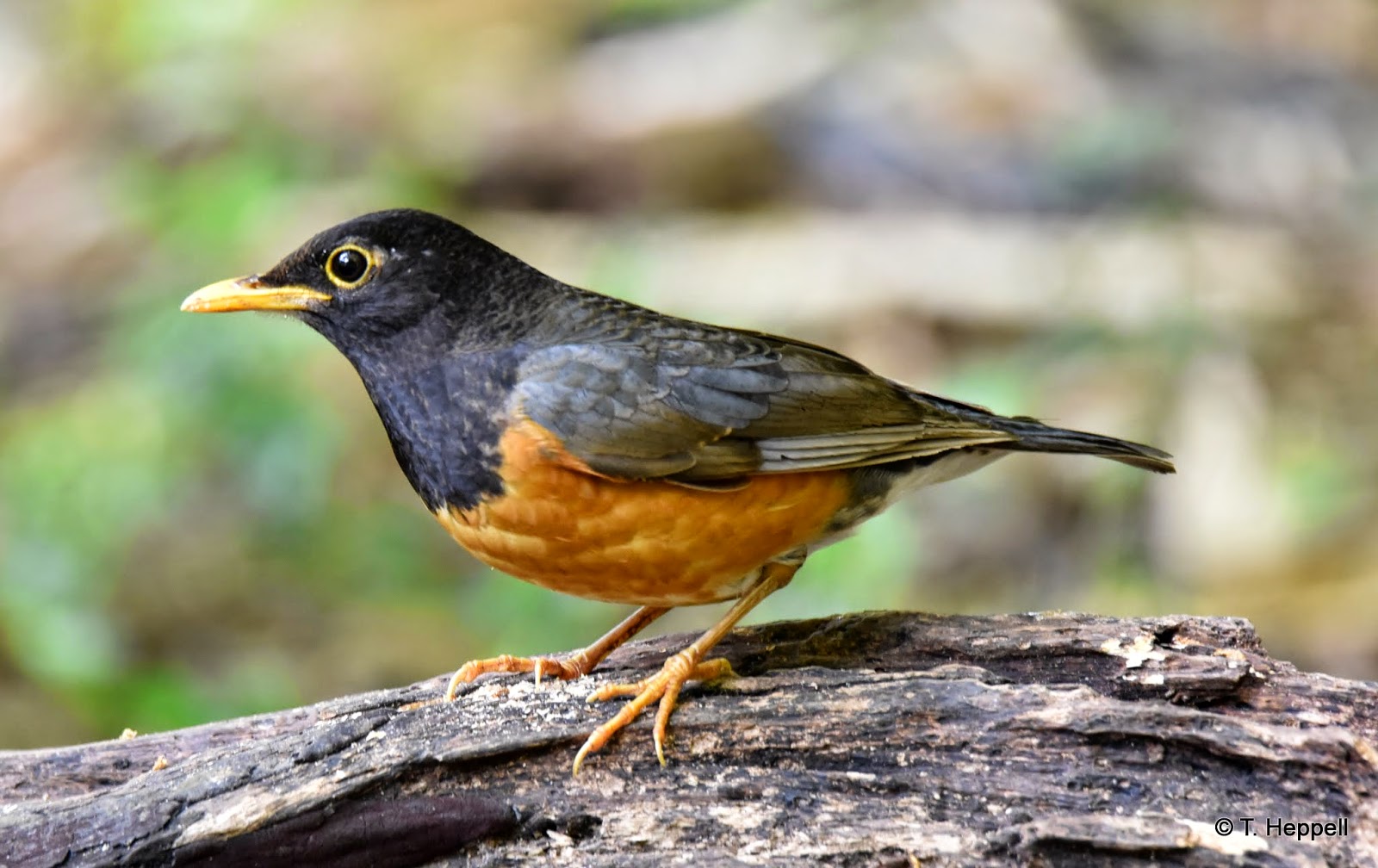We thought another trip to North Thailand
in the winter months would give us another birding perspective even though this
will be our 4th trip to Inthanon and the Doi’s. This time we asked Uthai to plan the
itinerary and he also helped to book the accommodation at Inthanon, Mae Ping,
Doi Ang Khang and Doi Lang.
We arrived Chiangmai on Saturday 10th January and stayed in the Old City district at the Royal Peninsula. In the morning Uthai came at 0600 hours and we were at Mae Hia to look for the Spotted Owlet that he had seen. Although we saw it fly overhead we could not get a good look as it was still dark. We left and continue to the Doi Suthep area and got really good views of two Asian Barred Owlets high on a tree. On the road to Inthanon Uthai stopped by a rice field when he spotted a Eurasian Wryneck and we got some good shots of it.
Arriving Doi Inthanon we stopped by the
bridge to look for the Collared Falconent and were able to see it, although far
away on the tree top. At 10.30 am we
found the Black-backed Forktail at the small waterfall. He had booked us at the King’s Project
accommodation which was a chalet with breakfast at 1500B per night. As it was too early
to check-in, we birded around the restaurant car park area where a flock of
Yellow-bellied Fantails were feeding among the tea trees. Lunch was at a local shop where Rainbow
trout was its speciality. After lunch
we spotted Mrs Gould Sunbirds and a Banded Bay Cuckoo from the park HQ carpark. The night was very cold.
Next morning
after breakfast we were out birding at the summit at 7.30 am and just as we
arrived some visitors were taking photographs of Mrs Gould and Green-tailed
sunbirds at the entrance of the trail.
We entered the trail and at around the same spot on the boardwalk where
we previously saw the Eurasian Woodcock, we were pleasantly surprised to see it
again. This time a good view. The Brown-cheeked Fulvettas were also bathing
while a Dark-sided Thrush was hiding nearby.
We drove to the big waterfall car park for lunch and later down to Li
Town for our next birding site, Mae Ping.
It was late when we arrived and checked into Palm Resort. The next day, Tues 13 Jan 6am, we started out for Mae Ping National Park for woodpeckers. The Great Slaty flew off too quickly but we later managed to get the Black-headed Woodpecker and the Grey-capped Pygmy Woodpecker. We continued to the camp ground and saw a Drongo-cukoo, Blue Rock Thrush, Hainan Blue Flycatcher, Crested Serpent Eagle and Red-billed Blue Magpie. Then it was back to the hotel for lunch, and on to Chiang Dao where we checked into Maelee’s Resort at 6pm.
On Wed 14 Jan at 6.45 am, we went to the temple ground and a fruiting tree was full of Barbets, Asian Fairy Blue Birds, and Bulbuls. We walked up to the top for the Asian Stubtail, and saw a White-tailed Robin, Buff-breasted Babbler and Dark-sided Thrush. Then it was time to go back to Malee and checked out for Doi Ang Khang. We arrived at The King's Project after lunch and proceeded to the hide behind the bamboo research garden. At the hide there were 3 photographers, one of them was Katy, whom we had met at Chumphon Raptor Watch 2 months ago. A Siberian Blue Robin, Rufous-bellied Niltava, White-tailed Robin, Black-breasted Thrush and a Blue Whistling Thrush were easily seen. Katy had just taken the Rusty-naped Pitta but we waited till almost 3pm and it did not show. At 4 pm it showed but was too shy and hid behind the bamboo. In the evening we checked into Ang Khang Villa. The park was busy with many visitors who came to observe and take photos of the flowering trees.
On Thu 15 Jan 7.30 am we drove to the cemetery area for Mrs Hulme Pheasant, again it did not show, but we saw Chestnut-bellied Rock Thrush, Crested Finchbill. Great Barbet, Brown-breasted Bulbul and Flavescent Bulbul. We drove back to the Kings Project and got the Streak Wren Babbler at the hide. On our way out we saw the Yellow-cheeked Tit going into a hole in the tree and a Pygmy Blue Flycatcher. We drove to Fang and checked into Vien Kaew Resort.
On Fri 16 Jan 6.15 am we checked out and it was on to Doi Lang. On the mountain road we saw 5 Mountain Bamboo Patridges feeding on the road side and Mrs Hulme Pheasant appeared but moved away too quickly and did not reappear. Further on we saw the Large Niltava, Rusty-cheeked Babbler, Silver-eared Laughing Thrush and Slaty Blue Flychatcher from a hide. The Spot-breasted Parrotbill was calling from the same bush we had encountered on our last trip. We walked to the guard post and looked into the Burmese side of Doi Lang but not many birds except for a Golden-throated Barbet, Giant Nuthatch and Chestnut-flank Nuthatch. We left in the afternoon for the 3 hour drive to Chiangmai, and checked into Chiangmai Plaza Hotel for our last night, before flying home. This trip was rather tiring doing 5 sites in 6 days however we managed to get 12 lifers and planned to have another trip with Uthai in March.
| 1) Ashy Bulbul | 49) Grey Bushchat | |
| 2) Ashy Drongo | 50) Grey Wagtail | |
| 3) Ashy-throated Leaf Warbler | 51) Grey-backed Shrike | |
| 4) Asian Barred Owlet | 52) Grey-capped Pygmy Woodpecker | |
| 5) Asian Fairy Bluebird | 53) Grey-eyed Bulbul | |
| 6) Asian Stubtail (L) | 54) Grey-headed Lapwing (L) | |
| 7) Banded Bay-cuckoo | 55) Hainan Blue Flycatcher | |
| 8) Black crested Bulbul | 56) Hil Blue FC Female | |
| 9) Black-backed Forktail (L) | 57) Himalayan Bluetail (L) | |
| 10) Black-breasted Thrush | 58) Indian Roller | |
| 11) Black-headed Bulbul | 59) Inornate (yellow-browed) Warbler | |
| 12) Black-headed Woodpecker (L) | 60) Japanese White-eye | |
| 13) Black-hooded Oriole | 61) Large Cuckoo Shrike | |
| 14) Black-throated Sunbird | 62) Large Niltava | |
| 15) Blue Rock Thrush | 63) Little Pied Flycatcher | |
| 16) Blue Whistling Thrush | 64) Little Spiderhunter | |
| 17) Blue-eared Barbet | 65) Long-tailed Shrike | |
| 18) Blue-throated Barbet | 66) Mountain Bamboo Patridge | |
| 19) Blue-winged Leafbird | 67) Mountain Bulbul | |
| 20) Blue-winged Minla | 68) Mrs Gould Sunbird | |
| 21) Blyth’s Leaf Warbler | 69) Olive-backed Pipit | |
| 22) Bronzed Drongo | 70) Plumbeous Redstart | |
| 23) Brown-breasted Bulbul | 71) Pygmy Blue Flycatcher (L) | |
| 24) Brown-cheeked Fulvetta | 72) Radd’s Warbler | |
| 25) Buff-breasted Babbler (L) | 73) Red-billed Blue Magpie | |
| 26) Burmese Shrike | 74) Red-whiskered Bulbul | |
| 27) Chestnut-bellied Rock Thrush | 75) Rufous-bellied Niltava | |
| 28) Chestnut-flank White-eye | 76) Rufous-winged Fulvetta | |
| 29) Chestnut-tailed Minla | 77) Rusty-cheeked Scimitar Babbler | |
| 30) Chinese White-eye | 78) Rusty-naped Pitta (L) | |
| 31) Collared Falconet (L) | 79) Scarlet Minivet | |
| 32) Common Rosefinch | 80) Siberian Blue Robin F | |
| 33) Coppersmith Barbet | 81) Siberian Ruby-throat | |
| 34) Crested Finchbill | 82) Silver-eared Laughing Thrush | |
| 35) Crested Serpent Eagle | 83) Slaty Blue FC F (L) | |
| 36) Dark-back Sibia | 84) Sooty-headed Bulbul | |
| 37) Dark-sided Thrush (L) | 85) Spot-breasted Parrotbill | |
| 38) Davidson Leaf Warbler (L) | 86) Streaked Wren Babbler (L) | |
| 39) Drongo Cuckoo | 87) Striped-throated Bulbul | |
| 40) Eurasian Woodcock | 88) Taiga Flycatcher F | |
| 41) Eursian Wryneck | 89) White-bellied Redstart F (L) | |
| 42) Fire-breasted Flowerpecker | 90) White-capped Redstart | |
| 43) Flavescent Bulbul | 91) White-gorgetted FC | |
| 44) Giant Nuthatch | 92) White-tailed Robin | |
| 45) Golden-fronted Leafbird (L) | 93) Yellow-bellied Fantail | |
| 46) Golden-throated Barbet | 94) Yellow-bellied Flowerpecker (L) | |
| 47) Gray-headed Canary Flycatcher | 95) Yellow-cheeked Tit | |
| 48) Green-tailed Sunbird |























No comments:
Post a Comment